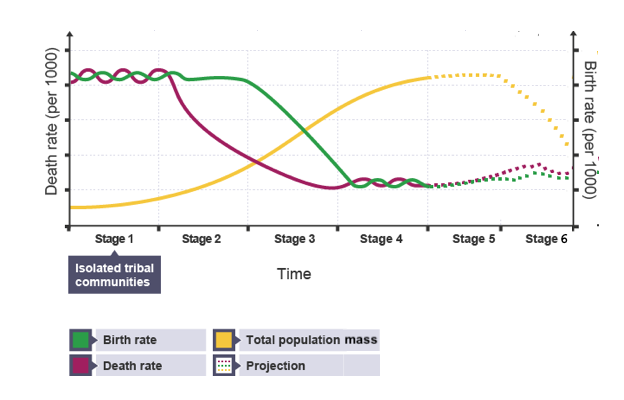Towards the 6th Stage
April 1, 2014
An often heard criticism of the theory of shrinking ourselves to reach a sustainable human presence on Earth is that in the long run we’ll fill up the space we’ve created with more people and that, even at a much smaller size, we may be worse off. Although such criticism may seem valid it is very unlikely because our decreased needs will create greater abundance. And contrary to what we might indeed have expected based on evolutionary biological rule, in affluent societies people don’t have lots of children. Thus shrinking is more likely to lead to a stable population. The historical demographic transition that underlays the phenomenon of developed nations having lower birth rates is traditionally divided into 4 or 5 stages. The Incredible Shrinking Man also suggests a 6th stage.
Stage 1 refers to a time when high birth and death rates more or less balance each other out.
Stage 2 sees an enormous decline in death rates while birth rates remain high, leading to the population explosion we’ve seen over the past 50 years.
Stage 3 sees the population move towards stability through a strong decline in birth rate, one of the most important reasons being that when we experience abundance we prefer to spend time doing other things than raising children.
Stage 4, population stability is reached.
Stage 5: Populations will decline because of sub-replacement fertility.
Stage 6: Stability of population, declined resource needs and abundance.